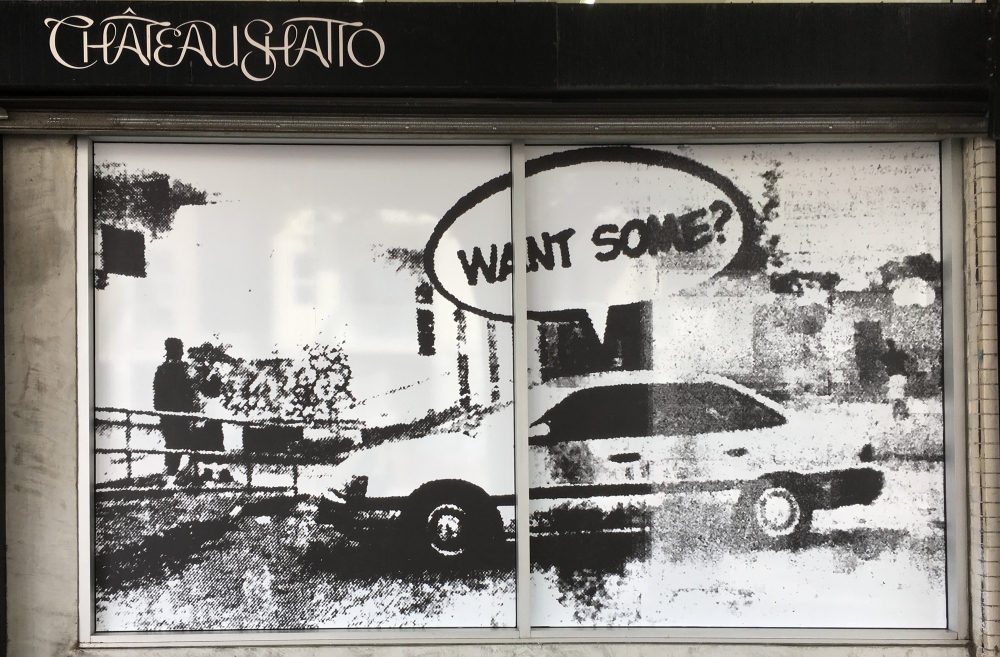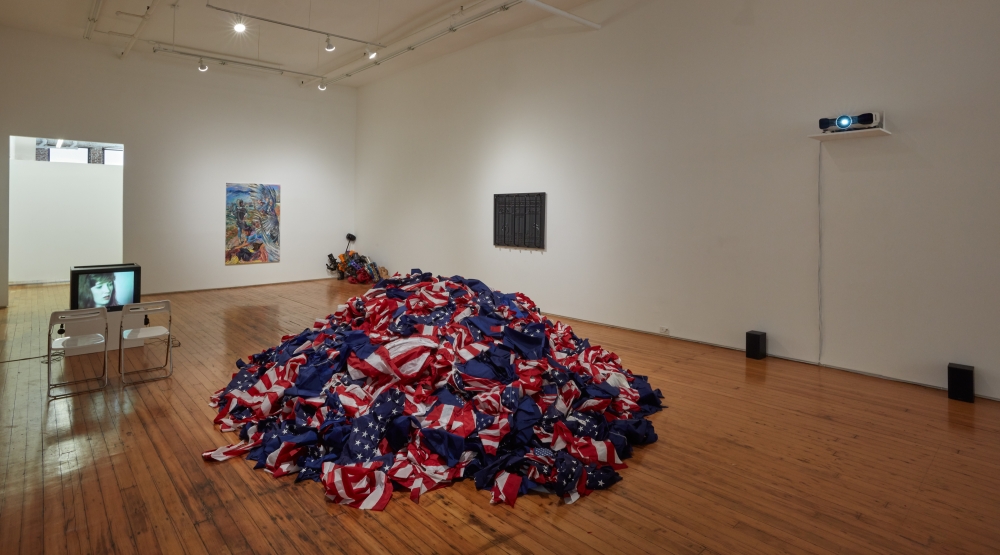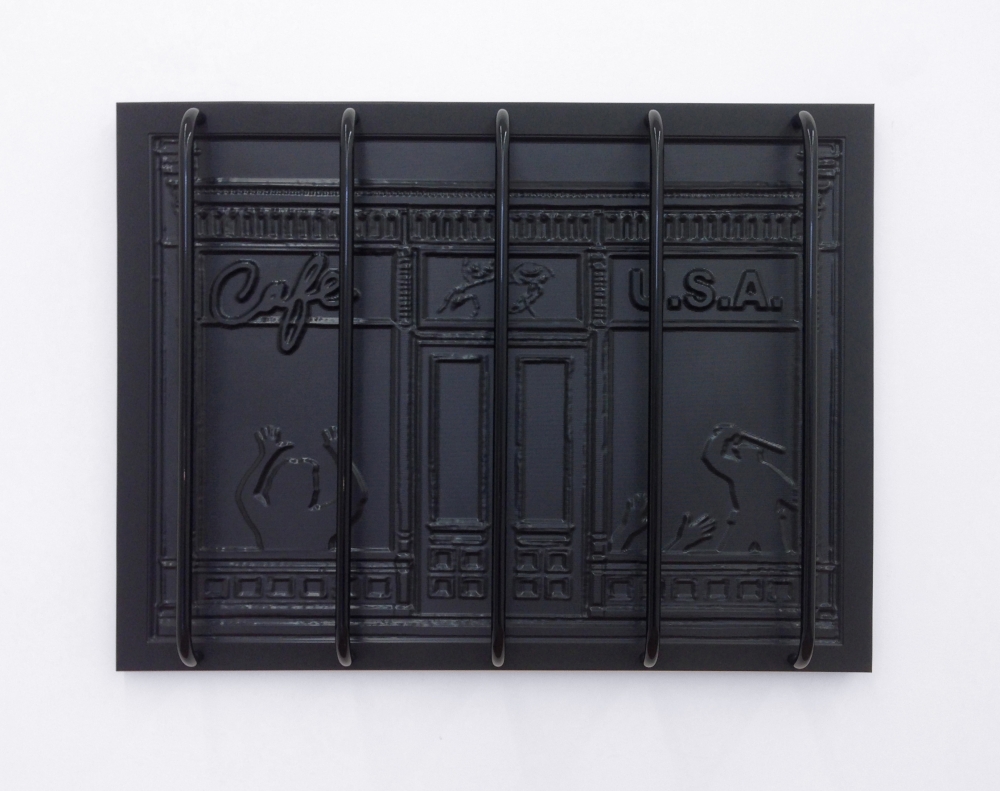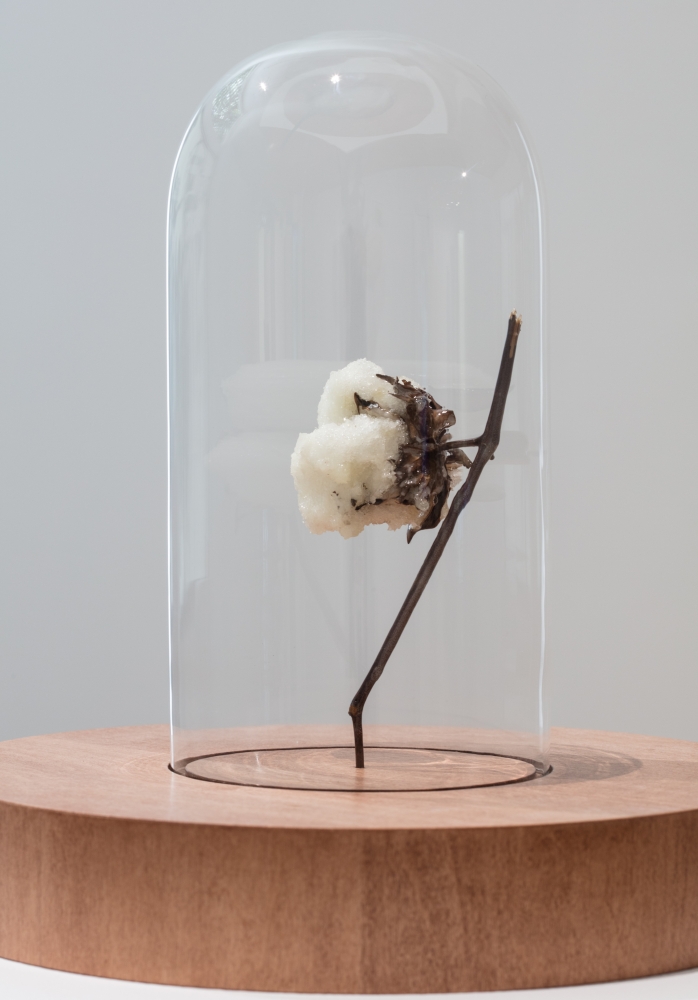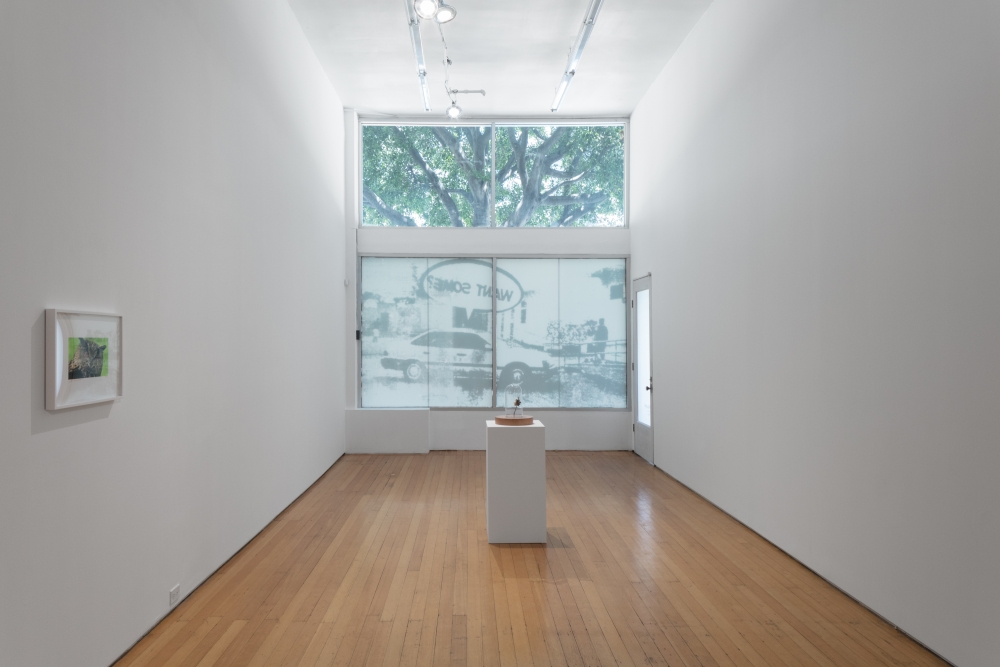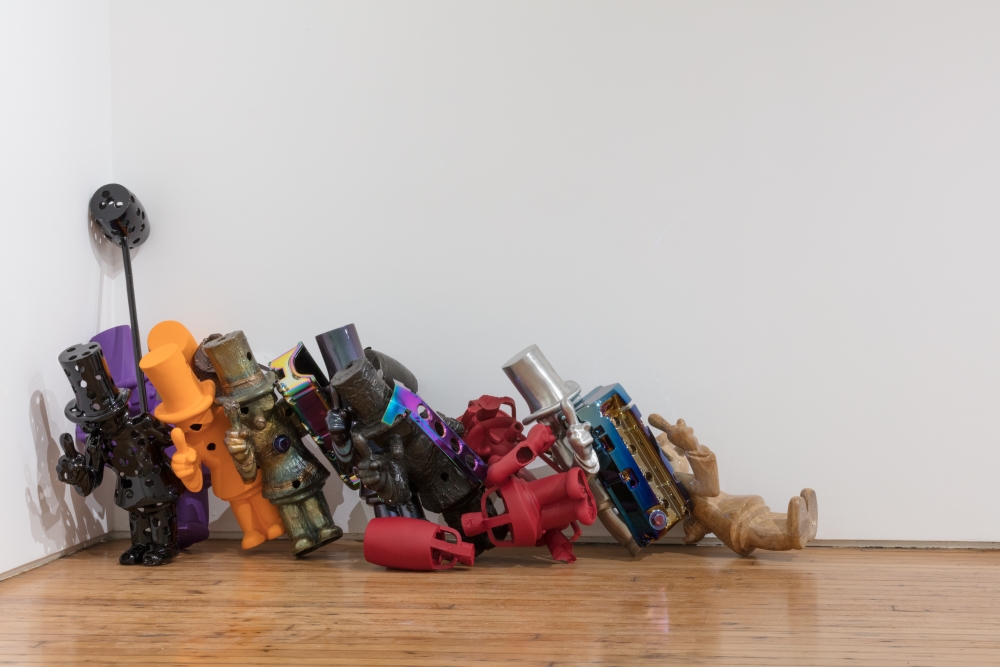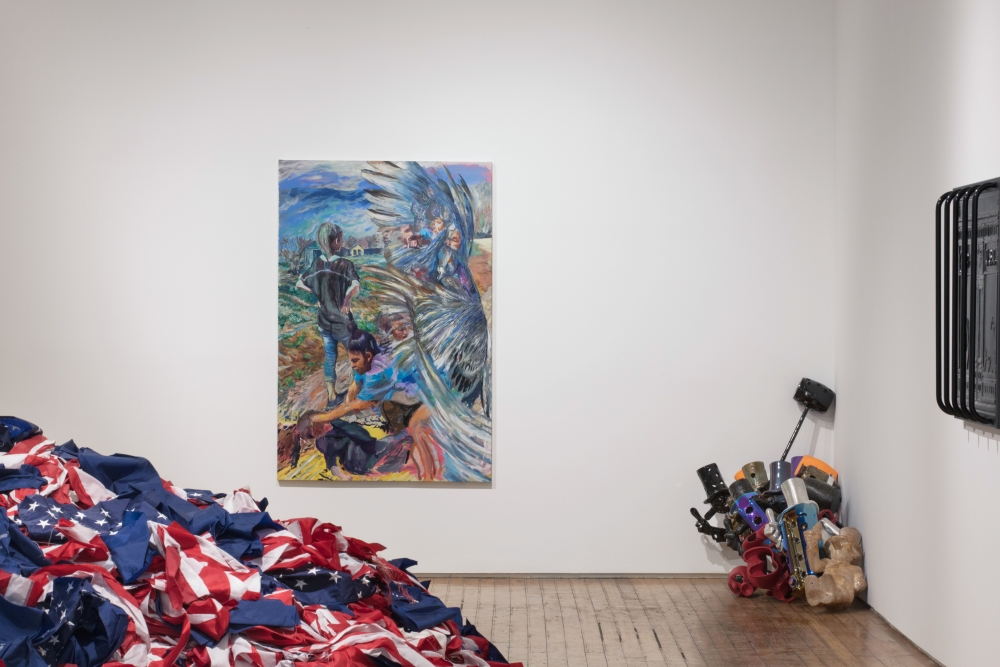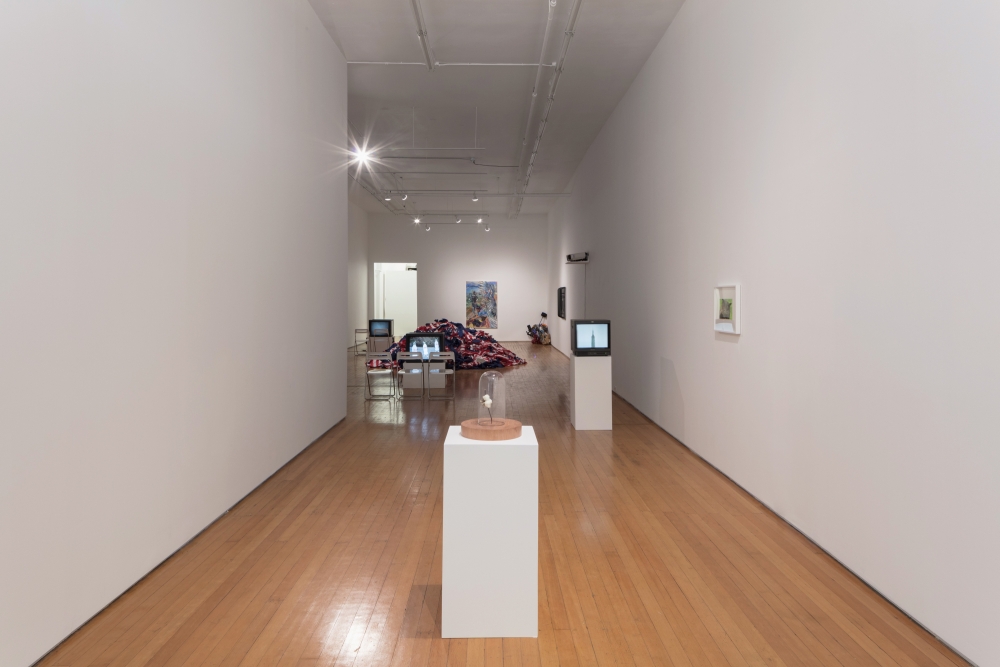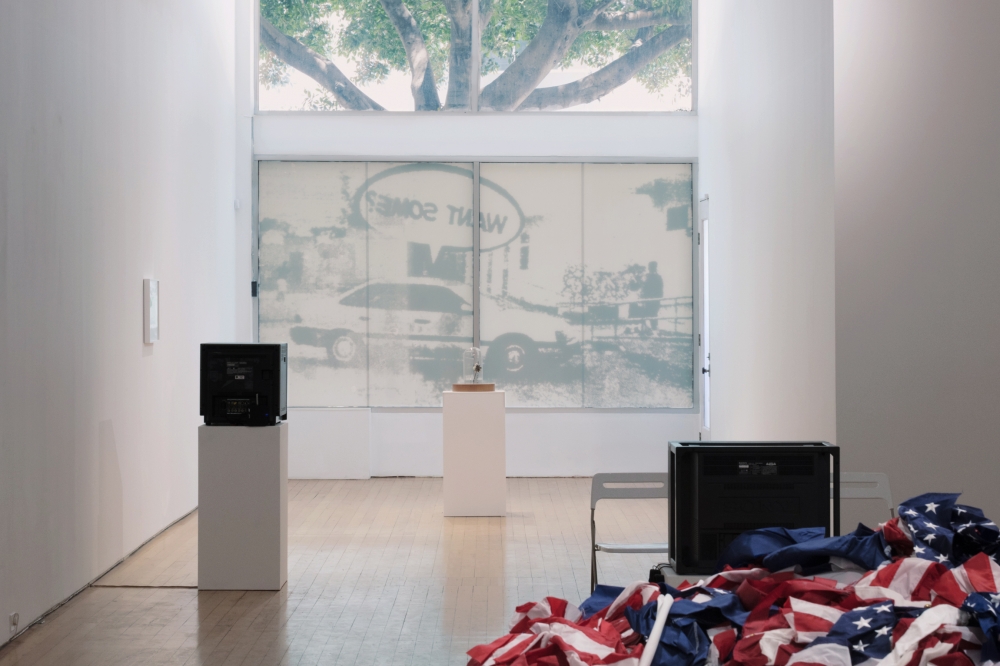The press release for the At This Stage group exhibition gives little explanation. Bullet points are presented in lieu of an overall summary, eight half-formed notes for 10 artists speculating on history and violence, images and their reproductions. The show’s ambiguous title — the adverb clause of an unfinished sentence — vaguely gestures toward an idea still in development, a work in progress. There’s half a quote from Jean Baudrillard about an unknown thing intruding on the psychology of the individual and thus society, and a question from artist and writer manuel arturo abreu: “how can we consider the power of these images when we’re already under their influence?”
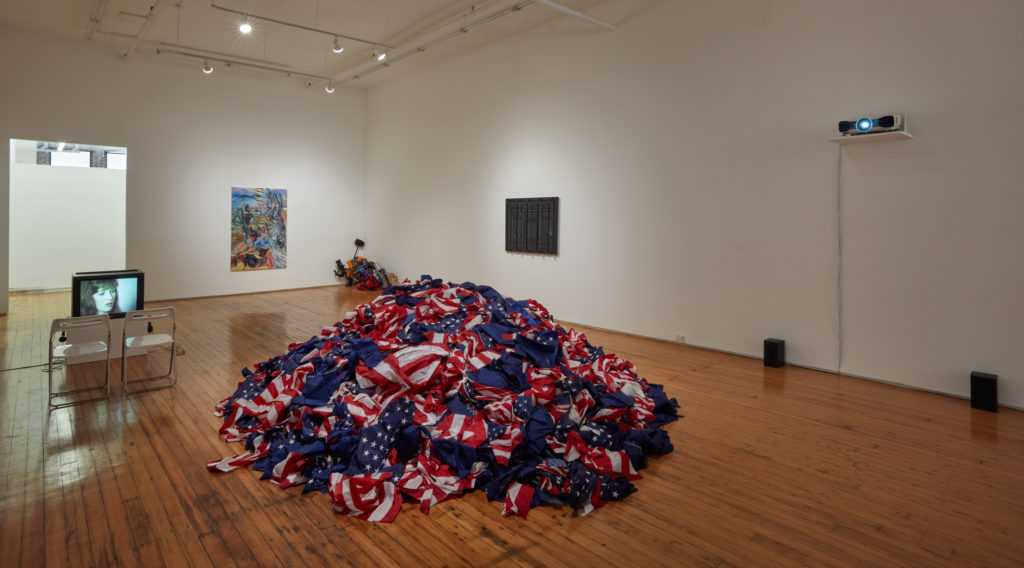
“(i dont know),” comes Olivia Barrett’s parenthetical response, curator and co-director of Los Angeles’ Château Shatto where the stark reds, whites and blues of Gardar Eide Einarsson‘s ‘Flag Waste (Stars and Stripes)’ sit in a pile at the center of the dimly-lit works on display in At This Stage from June 10 to August 12. The Australian expat organiser locates the show in the United States physically, if ambivalently, nodding to its national icons in the factory refuse of the aforementioned fabric pieces by a Norwegian artist, or the 1972 pop art appropriation of American Sturtevant‘s ‘Warhol Empire State’ video. A more sinister sign of the Republic’s past and also present sits in a bell jar on a pedestal nearby, Aria Dean‘s single cotton branch embalmed in polyurethane — a symbol of the country’s history of slavery, lifeless but eternal.
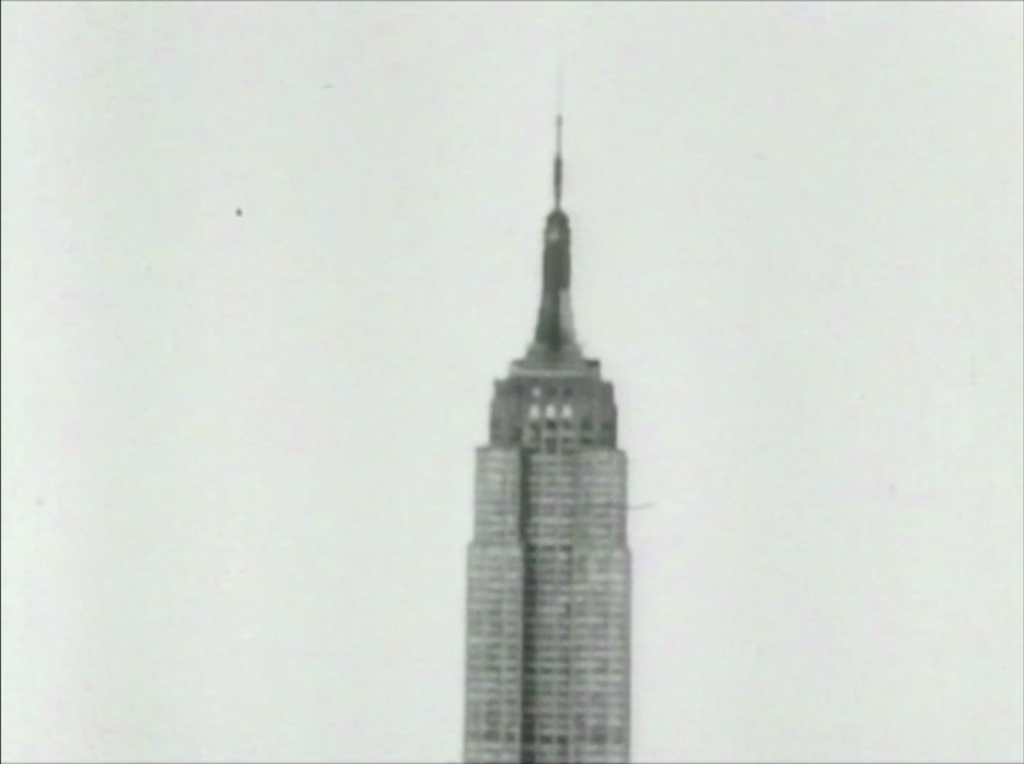
Perched atop a hidden signal jammer, the sombre though seductive piece recalling the rose in Disney’s Beauty & the Beast faces across from Melbourne-based artist Hamishi Farah‘s ‘Aleeyah or Repatriation for Hypervisibility,’ a large-scale acrylic painting depicting a brutal video-gone-viral, where a vicious racial slur is met with physical violence. The complicated relationship between visibility and circulation that Dean outlines in the search for a “new collective blackness” in her writing bounces back from Farah and against Jordan Wolfson‘s ‘Con Leche’ video of animated Diet Coke bottles filled with milk, marching out of sync with a voiceover. The power of those pop cultural reference points continueS. There’s the instrumental Elliot Smith soundtrack playing from Bunny Rogers‘ story of white America in an alcoholic piano performance by a computer-generated image in ‘Mandy Piano Solo in Columbine Cafeteria‘ and Parker Ito‘s glossy sculptural reproductions of a grisly Los Angeles icon of pest control in ‘Western Exterminator / Kernel Kleenup / Little Man/ Pesterminator.’
It’s in this underbelly of American (see, global western) consumerism that At This Stage sits suspended, where the liberal freedoms of capitalism and laissez-faire produce the glitzy, smooth bars keeping would-be patrons out of Body by Body‘s ‘CAFE U.S.A.’ Or one where Chris Kraus draws the violent human impulses of sadomasochism, murder and filmmaking together in the milieu of a late-80s New York at the genesis of what would become a swift and aggressive push towards property development in the city for her film ‘How to Shoot a Crime.’ As in the Martine Syms‘ ‘Some what’ window display vinyl sticker facing out from Château Shatto — a low-quality black-and-white image of a nondescript sedan in a nondescript neighborhood — the show presents a degraded portrait of a future that’s yet to come. **
